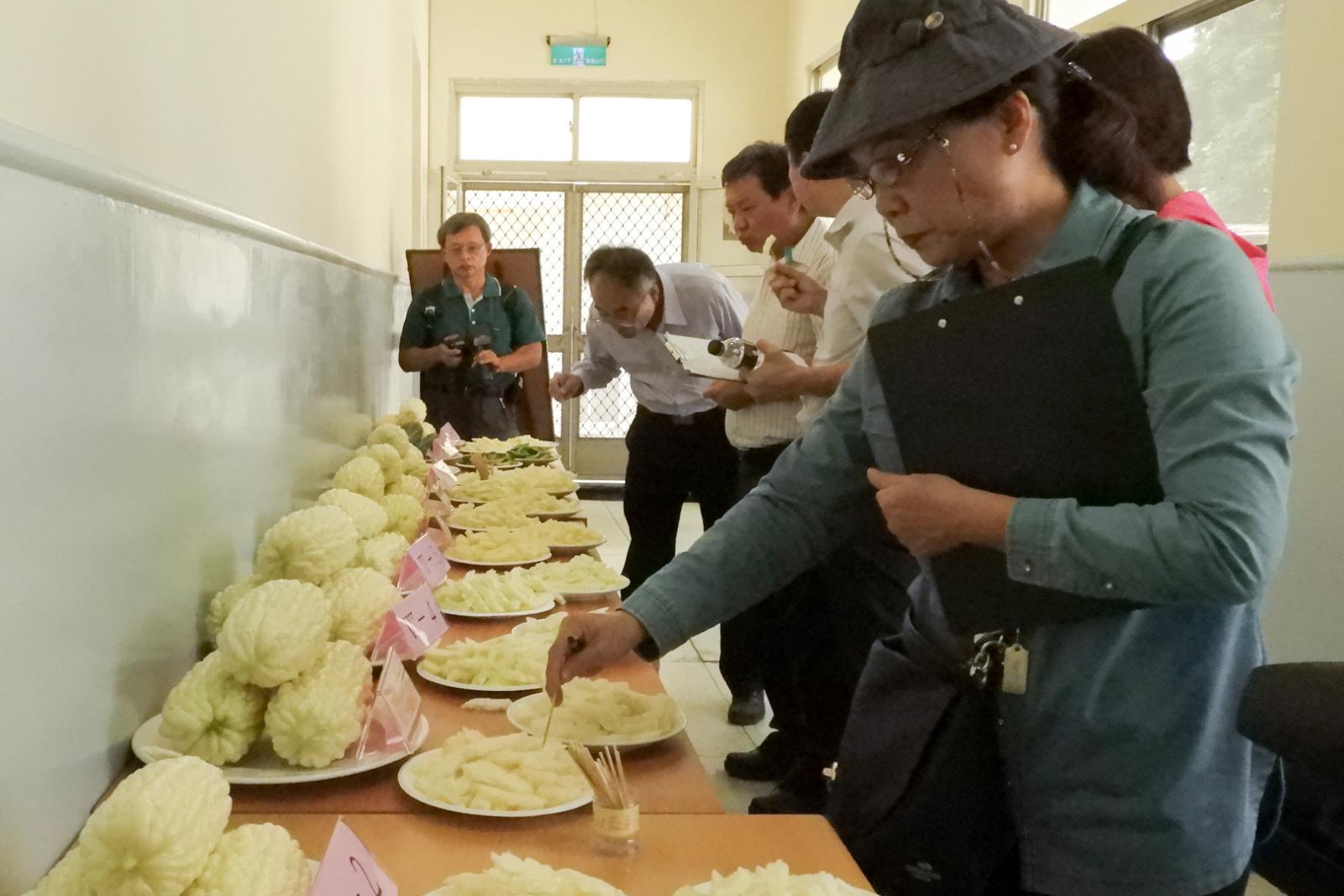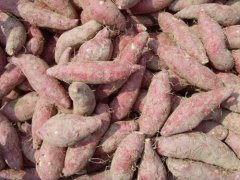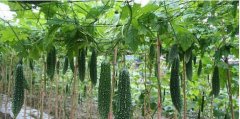Which is better, white balsam pear or green balsam pear? White bitter melon Nongxi 29 and green balsam pear EX-2682 won the championship.
The Taiwan seed and Seedling improvement Association and the Fengshan Tropical Horticulture Research Institute of the Council of Agriculture of the Executive Yuan jointly organized the "balsam pear variety competition". The white melon group was won by Nongxi 29 of Nongxi Enterprise Co., Ltd., while the green melon group was won by EX-2682 of Nongyou Seedling Co., Ltd.
Good seed, good-looking, delicious, award-winning everything
The "balsam pear variety competition" was attended by five seedling operators to launch their own proud varieties to participate in the competition. There were 11 varieties in the white melon group and 6 varieties in the green melon group. The selection was held on November 30 in Feng Experimental Institute, and the scoring items have four major indicators, namely, "plant growth potential" (20%), "appearance and uniformity" (40%), "yield" (20%), and "taste evaluation" (20%).
The judges not only scored the balsam pear fruits displayed on the spot, but also went to the net room where balsam pear was planted to observe the key points such as plant growth, disease resistance, yield, fruit appearance and leaf appearance. Finally, raw balsam pear slices and boiled balsam pear slices were prepared by Feng Test Institute, so that the judges could taste their taste and flavor.
Lin Zhaoneng, an assistant researcher in the vegetable department of Feng Experimental Institute, who is in charge of the field management task of the competition, pointed out that for the fairness of the competition, the Taiwan Seedling improvement Association first numbered the seeds sent by various seedling operators. The balsam pear seeds received by Feng test have hidden the identity of varieties and operators, and Lin Zhao can re-number them according to the two types of white melon and green melon, and then send them to the nursery to accelerate germination and grafting. Finally, the grafted seedlings were sent to the Feng Experimental Station for planting and cultivation, and even the Taiwan Seedling improvement Association did not know the final number of the balsam pear seeds sent.
In addition, each variety was replanted twice in different locations in the net room to reduce the differences in weather, ventilation or other environmental factors affected plant growth and fruiting characteristics. The review can observe the average performance of the same variety in the two regions.
The judges tried to eat raw and cooked food slices of all participating varieties to judge their taste and flavor.
"Market demand" is the key
There are five judges in the competition, including Liao Wenwei, a researcher at the seed and seedling improvement farm under the Council of Agriculture of the Executive Yuan, Wang Yuhua, head of the farm management group of the Agricultural Experimental Institute, Xiao Zhenghong, secretary of the Agricultural improvement Farm in Taichung District, Shen Peisheng, secretary of the Agricultural Association of Xiluo Town, Yunlin County, and Huang Mulan, deputy manager of the Taipei Agricultural Transportation and Marketing (Stock) Company, were graded from the perspective of academia and industry respectively.
The final ranking of the award is obtained after the synthesis of the four major scoring items, and the varieties that can win the prize all perform well in each project and meet the needs of the market. Chen Ganshu, director of the Feng Test Institute, personally observed the field growth of each variety. I also agree with the results of the review.
Hsiao Cheng-hung points out that cross-criteria should also be considered. For example, although emphasis is placed on high yield, scores will be affected if the fruit is too small while the yield is excessive, or if the difference in fruit size of the same variety is too large. However, this review is mainly based on the preference of the Taiwan market, and other varieties that have not won the award may be those preferred by foreign consumers.
Huang Mulan, deputy manager of the Taipei Agricultural Transportation and Marketing (Stock) Company, looked at it from an industrial point of view. She revealed that in fact, no matter what variety and grade it is, it has its own customer base. Some people like to eat large ones, some like to buy small ones, and some people buy cracked fruits. The most important thing is to do a good job in graded packaging and stable supply, because for the industry, stable output means that it can be delivered to customers every day.
In the past, the Taiwan Seedling improvement Association has never held a balsam pear variety competition, because the growing period of balsam pear is long, and it is troublesome to cultivate it, so choosing balsam pear as the theme of the competition this year is a major innovation.
Wang Zhenmao, chairman of the Taiwan Seedling improvement Association, the organizer, said that the association holds 2 or 3 varieties competitions for different crops every year, but this is the first time that balsam pear has been developed in the association. Almost all the seed and seedling operators in the association have launched products to participate. He thanked Feng Test Institute for its assistance in handling the competition, especially the results of the competition attracted the attention of people from all walks of life, so the field management was under great pressure, and the varieties already had the characteristics of adapting to the climate and soil environment. Therefore, it is emphasized that the purpose of hosting the variety competition is that each company can see its own advantages and disadvantages and contribute to the improvement of varieties in the future.

- Prev

According to Taiwan sweet potato variety Golden Sweet Potato Tainong 57, what are the nutrients and effects of sweet potato?
In the 400th year since Yan Siqi came to Taiwan for development tomorrow (1621), the agricultural area has reached 5800 hectares, ranking among the highest in the country and Yunlin County in terms of agricultural output value, including rice, sweet potato, peanut, corn, garlic, golden melon, sugar cane, mulberry and medicine.
- Next

What are the characteristics and nutritional value of new balsam pear varieties, crisp concubine black balsam pear and crispy concubine black balsam pear?
You know balsam pear has white and green, do you know there is also a kind of black balsam pear? The yield of black balsam pear is high, this kind of black balsam pear color is dark green, the shape is longer than green balsam pear, the flesh is thicker, the tumor-like protuberance is bright and shiny, and the glossiness is excellent. It's the largest
Related
- The first cup of black tea in spring, the flavor and history of tea gardens in Kenya, Africa
- The computer can not only choose potatoes, but also grow tea rice. AI will grow winter oolong tea champion.
- It is not only the inflated tea bitten by insects, but also engraved with the four seasons tea in Beipu.
- The Oriental Beauty Tea Festival in Zhuxian County takes the stage at the weekend to experience the plus-size feast of oil tea.
- & quot; Oriental Beauty Tea & Exploration of Emei in Hsinchu, the hometown of quot;
- The new variety of strawberry "Tainong 1" dessert is the first choice with mellow aroma. Crimson gorgeous
- History of Tea in Taiwan: from Wild Inner Mountain to Export Tea Garden
- Two types of Taiwan Oriental Beauty Black Tea won the British three-Star Award for Childhood Tea Xiang Zhang Jiaqi changed from pilot to champion tea maker.
- Banana species and varieties: the planting history of Taiwan Xianren banana and dwarf banana is long, is banana disease resistant?
- Coffee planting Technology: Qianjie Coffee from Seedling to harvesting

